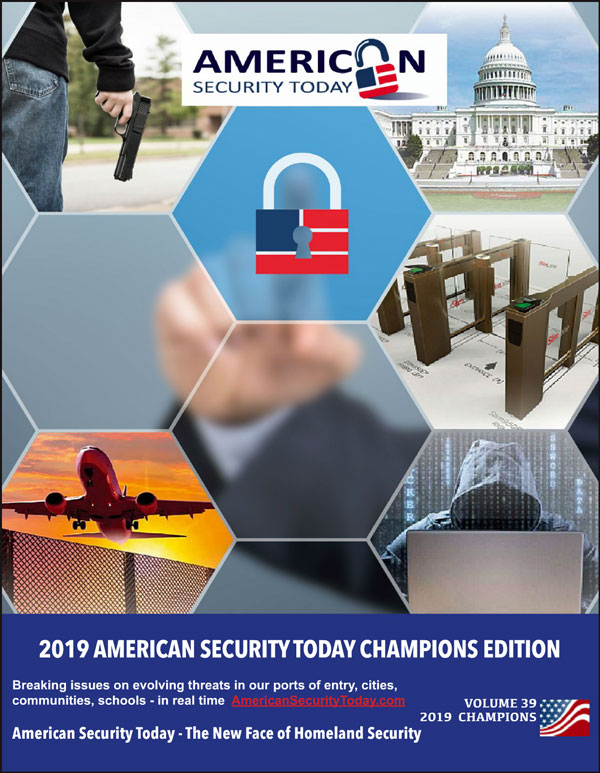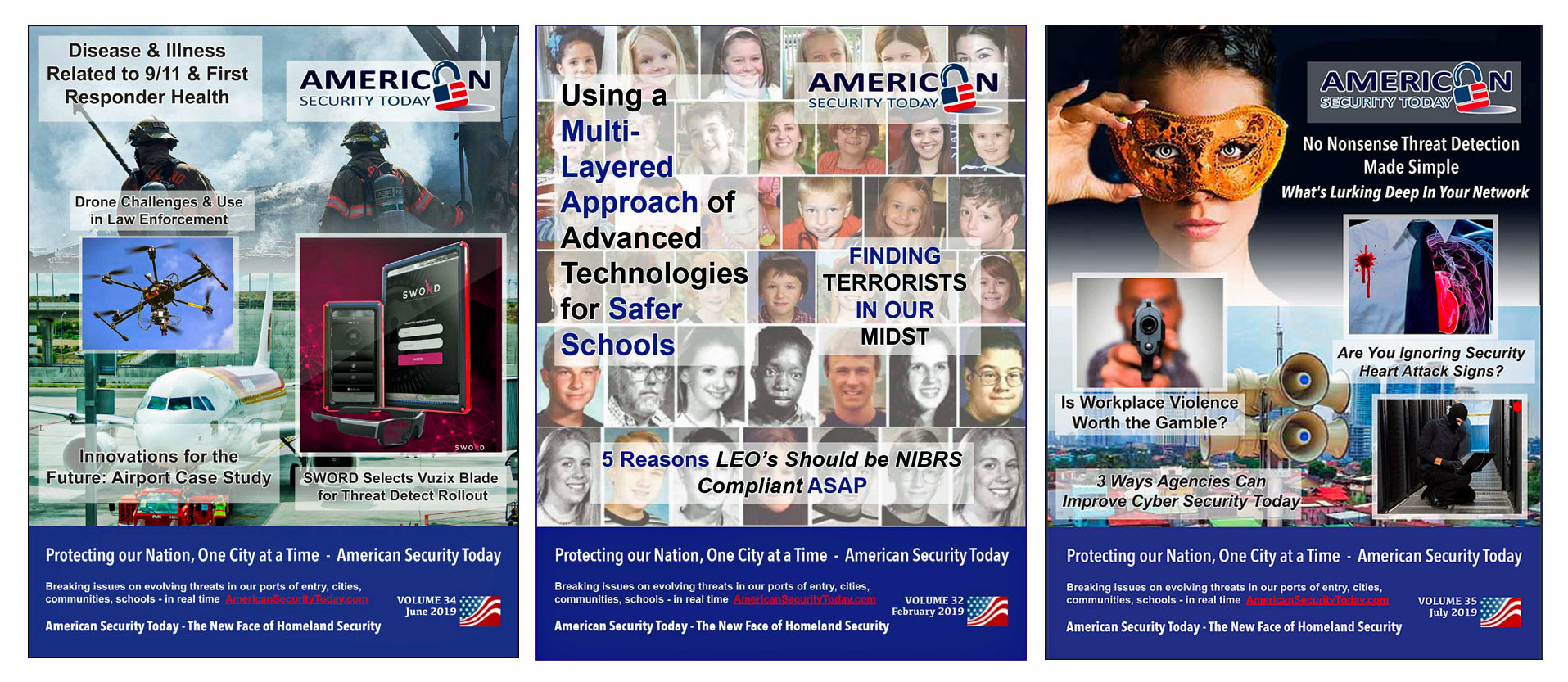
By ‘2019’ ASTORS Homeland Security Platinum Award Winner for Best Intrusion Detection & Prevention Solution, Senstar Corporation
Privacy laws continue to change.
On January 1, 2020, the California Consumer Privacy Act (CCPA) went into effect.
Similar to the European General Data Protection Regulation (GDPR), the CCPA aims to give people a measure of control over their personal privacy.
Although California may be leading the charge in the US, 11 other states have also introduced similar bills*.
(The CCPA allows people to ask companies what data they have on them, demand that it be deleted and prevent it from being sold to third parties. Axios Media Reporter Sara Fischer explains how this law came to be and what it means for the rest of the country.. Courtesy of CBS News and YouTube. Posted on Jan 2, 2020.)
The corporate penalties for transgression of privacy laws can be severe.
As an example, GDPR non-compliance imposes a fine of four percent of annual global revenue or €20 million, whichever is greater.
With the growing defense of privacy rights worldwide, if you’re responsible for your company’s security, it’s essential you understand the impacts of privacy laws.
It’s not obvious how privacy protection and physical security can work together; in fact, the two often have conflicting goals.
The information needed to protect a building requires identifying individuals through video feeds, access badges, and/or biometric information.
Deterrent measures such as perimeter security cameras must observe wide areas to catch violations, capturing images of many people with no harmful intent.
All of these data points outline a detailed history of actions, times, and places for everyone under the system’s scrutiny, potentially violating several aspects of personal privacy.
(For example, for nearly 40 years, Senstar has been safeguarding people, places and property in the corrections, critical infrastructure, military, manufacturing, transportation, and oil and gas markets. Senstar Symphony software delivers an all-in-one solution for video, security, and information management. Symphony works with cameras from all major manufacturers, scales to deployments of any size. Courtesy of Senstar and YouTube.)
Turning physical security measures off is clearly not practical. What can be done?
Basic components of a privacy-safe security policy
Many security companies, even those in North America, seem to focus almost exclusively on GDPR when discussing privacy concerns.
While important to consider, GDPR was neither written for the security market nor for non-European interests.
Even though the regulations in other jurisdictions are currently in a state of flux, there are some basic elements to consider when looking at creating your own privacy-safe security policy:
Intention
-
The intent of your policy should be clearly stated up front, such as the jurisdiction your policy will cover or the expected privacy rights of different types of people such as employees, visitors, or suppliers.
-
This allows you to quickly double-check that you are fulfilling the overall intent of your policy when you audit or change it.
-
For instance, do we need to change anything if we expand our operation across state lines? Should we be keeping video footage of people who pose no security threat?
-
Knowing the intention of your privacy policy makes these questions easier to answer and can point out when changes are necessary.
Access
-
Carefully consider the appropriate access level for every role in your organization and grant only the minimal-required privileges to prevent potential abuse.
-
Knowing that private information and personal images can be surreptitiously captured by a disgruntled employee with a smartphone in seconds, security centers need to be extremely careful at revealing only the data necessary for the task at hand.
-
This can include things like camera control too.
-
You don’t want operators to misuse security cameras in order to follow someone down the street or peer into private residences.
-
You also don’t want a security guard posting footage to social media of a car accident or celebrity sighting.
Encryption and retention
-
Data needs to be encrypted and kept long enough for your company’s own security audits, like camera footage surrounding alarm events, and for legal oversight such as responding to a subpoena, but it should be destroyed after a certain point.
-
This is where physical security systems can help bolster cybersecurity efforts, since private data cannot be stolen if it no longer exists.
-
Data retention must be carefully coordinated with system backups, as backups – either offline or in the cloud – enhance the problem of only keeping data that’s time-relevant.
-
To be successful, any data retention policy must be consistently applied, which requires automatic handling rather than manually executed strategies.
-
One way that backups can be handled is by deleting data encryption keys once their lifespan expires.
-
While this doesn’t physically delete the expired data, it does make all copies effectively unreadable regardless of how many there are or where they are stored.
Technology
-
Technology plays a big part in adhering to privacy standards.
-
Ensure your system has technology with privacy features and controls.
-
Also critical is intelligent deployment of those devices – it makes little sense to have privacy-enhancing cameras if those features are never enabled or avoided by existing protocols.
Privacy-enhancing security
-
What sorts of technologies are we talking about?
-
Since privacy-enhancing technologies in modern security cameras seem to be little known or widely misunderstood, let’s take a look into several of these.
Static masking
-
This allows a camera or video management software (VMS) to pixelate or blank out defined areas within the camera’s range, letting you mask areas outside designated property, such as a public sidewalk or private residence.
-
While most commonly applied to fixed position cameras, it can also be a feature on pan, tilt, and zoom (PTZ) cameras using a fixed-coordinate system.
-
If static masking is performed from the VMS software, the original video feed must be secured via access-level privileges and encryption.
Dynamic masking
-
Unlike static masking intended for fixed locations, dynamic masking applies pixelation to objects that enter into and out of the scene.
-
While this is primarily used to identify and obscure faces, it can also be applied to other sensitive identifying characteristics such as license plates.
Significant events
-
Some systems default to a privacy-protected state and only record video when a significant event is detected.
-
This removes the need for operators to be consistently monitoring cameras as well as any reliance on the correctness of operator judgements.
-
What qualifies as a significant event? That depends on the product.
-
It can be something that’s recognized in the video feed by a machine-trained AI such as a person’s unexpected movements within the frame.
-
It can also be an event tied to another sensor trigger such as detecting someone scaling a perimeter fence.
Face recognition
-
Facial recognition software can be used to flag identified faces (for building entry access) or unidentified faces (for security breaches).
-
In either case, recognition of the individual is similar to dynamic masking in that any additional personal information needs to be guarded by system access rights.
Security without privacy protection is no longer an option
Having a solution that prioritizes physical security of individuals at the expense of their privacy is no longer an option.
If doing both is not mandated by your jurisdiction, it soon will be.
Getting ahead of enforced legislation while you have ample time to investigate options is the best position to be in.
Start with a detailed privacy-safe security plan, followed by a company-wide policy.
You will likely need to incorporate some advanced technology into your solution; technology that is flexible and adaptable to changing requirements is ideal.
*To stem a country-wide patchwork of privacy obligations in the US, federal-level privacy bills are being introduced such as the American Data Dissemination Act and the Social Media Privacy Protection and Consumer Rights Act of 2019.
This page is being provided for informational purposes only and should not be misconstrued as legal advice.
Senstar Corporation Takes Platinum in 2019 ‘ASTORS’ Homeland Security Awards Program

Senstar Corporation
-
Best Intrusion Detection & Prevention Solution
-
FiberPatrol FP400
-
FiberPatrol FP400 cost‑effective fiber optic fence-mounted perimeter intrusion detection system that detects any attempt to cut, climb, or otherwise compromise a perimeter.
-
FiberPatrol FP400 is a zone-reporting option ideal for smaller perimeters. Each processor provides up to 4 zones of detection and supports non-sensing lead-in cable, enabling electronics to be installed up to 20 km (12 mi) from the perimeter fence.

-
Senstar was also recognized with Multiple Wins in the 2018 ‘ASTORS’ Awards Program.
With intelligent video management, video analytics, access control, and innovative perimeter intrusion detection systems, Senstar offers a comprehensive suite of proven, integrated technologies that reduce complexity, improve performance and unify support.

Enter today to Compete in the 2020 ‘ASTORS’ Homeland SecurityAwards at https://americansecuritytoday.com/ast-awards/.
The Annual ‘ASTORS’ Awards Program is specifically designed to honor distinguished government and vendor solutions that deliver enhanced value, benefit and intelligence to end users in a variety of government, homeland security and public safety vertical markets.

The Annual ‘ASTORS’ Awards is the preeminent U.S. Homeland Security Awards Program highlighting the most cutting-edge and forward-thinking security solutions coming onto the market today, to ensure our readers have the information they need to stay ahead of the competition, and keep our Nation safe – one facility, street, and city at a time.
American Security Today is pleased to announce that Deann Criswell, the NYC Emergency Management Commissioner will deliver the keynote address at the 2020 ‘ASTORS’ Awards Presentation Luncheon Banquet in New York City.
Nominations are now being accepted for the 2020 ‘ASTORS’ Homeland Security Awards at https://americansecuritytoday.com/ast-awards/.
Comprehensive List of Categories Include:
| Access Control/ Identification | Personal/Protective Equipment | Law Enforcement Counter Terrorism |
| Perimeter Barrier/ Deterrent System | Interagency Interdiction Operation | Cloud Computing/Storage Solution |
| Facial/IRIS Recognition | Body Worn Video Product | Cyber Security |
| Video Surveillance/VMS | Mobile Technology | Anti-Malware |
| Audio Analytics | Disaster Preparedness | ID Management |
| Thermal/Infrared Camera | Mass Notification System | Fire & Safety |
| Metal/Weapon Detection | Rescue Operations | Critical Infrastructure |
| License Plate Recognition | Detection Products | And Many Others! |
Don’t see a Direct Hit for your Product, Agency or Organization?
Submit your category recommendation for consideration to Michael Madsen, AST Publisher at: mmadsen@americansecuritytoday.com.
The 2019 ‘ASTORS’ Awards Program surpassed expectations with a record number of nominations received from industry leaders and government agencies, and drew over 200 attendees to the ‘ASTORS’ Awards Presentation Banquet – an exclusive gourmet luncheon and networking opportunity which filled to capacity, before having to turn away late registrants.

The event featured an impassioned and compelling keynote address by William J. Bratton, former police commissioner of the New York Police Department (NYPD) twice, the Boston Police Department (BPD), and former chief of the Los Angeles Police Department (LAPD), as he walked attendees through 50 years of American policing history, the impacts on the communities, and the evolution of critical communication capabilities in our post 9/11 landscape.
Commissioner Bratton, one of the world’s most respected and trusted experts on risk and security issues and Executive Chairman of Teneo Risk a global advisory firm, was recognized as the ‘2019 ‘ASTORS’ Person of the Year’ for his Lifetime of Dedication and Extraordinary Leadership in Homeland Security and Public Safety.
Why the ‘ASTORS’ Homeland Security Awards Program?

American Security Today’s comprehensive Annual Homeland Security Awards Program is organized to recognize the most distinguished vendors of physical, IT, port security, law enforcement, and first responders, in acknowledgment of their outstanding efforts to ‘Keep our Nation Secure, One City at a Time.’
Over 200 distinguished guests representing Federal, State and Local Governments, and Industry Leading Corporate Firms, gathered from across North America, Europe and the Middle East to be honored among their peers in their respective fields which included:
- The Drug Enforcement Administration (DEA)
- National Center for Missing and Exploited Children (NCMEC)
- United States Marine Corps
- The Federal Protective Service (FPS)
- Argonne National Laboratory (ANL)
- United States Postal Inspection Service
- DHS S&T
- United States Marshals Service (USMS)
- The Port Authority of New York & New Jersey Police (PAPD)
- The Department of Justice (DOJ)
- The New York State Division of Homeland Security & Emergency Services (NYS DHSES)
- United States Border Patrol
- AlertMedia, Ameristar Perimeter Security, Attivo Networks, Automatic Systems, Bellevue University, BriefCam, Canon U.S.A., CornellCookson, Drone Aviation, FLIR Systems, Hanwha Techwin, HID Global, IPVideo Corp., Konica Minolta Business Solutions, LenelS2, ManTech, Regroup Mass Notifications, SafeLogic, SolarWinds, Senstar, ShotSpotter, Smiths Detection, TCOM LP, Trackforce, Verint, and More!
Why American Security Today?
The traditional security marketplace has long been covered by a host of publications putting forward the old school basics to what is Today – a fast changing security landscape.
The traditional security marketplace has long been covered by a host of publications putting forward the old school basics to what is Today – a fast changing security landscape.
American Security Today is uniquely focused on the broader Homeland Security & Public Safety marketplace with over 75,000 readers at the Federal, State and local levels of government as well as firms allied to government.
American Security Today brings forward a fresh compelling look and read with our customized digital publications that hold readers eyes throughout the story with cutting edge editorial that provides solutions to their challenges.
Harness the Power of the Web – with our 100% Mobile Friendly Publications

The AST Digital Publications is distributed to over 75,000 qualified government and homeland security professionals in federal, state and local levels.
‘PROTECTING OUR NATION, ONE CITY AT A TIME’
AST Reaches both Private & Public Experts, essential to meeting these new challenges.
Today’s new generation of public safety and security experts need real-time knowledge to deal with domestic and international terrorism, lone wolf attacks, unprecedented urban violence, shifts in society, culture and media bias – making it increasingly difficult for Homeland Security, Law Enforcement, First Responders, Military and Private Security Professionals to implement coordinated security measures to ensure national security and improve public safety.
These experts are from Government at the federal, state and local level as well as from private firms allied to government.
AST provides a full plate of topics in our AST Monthly Magazine Editions, AST Website and AST Daily News Alerts, covering 23 Vital Sectors such as Access Control, Perimeter Protection, Video Surveillance/Analytics, Airport Security, Border Security, CBRNE Detection, Border Security, Ports, Cybersecurity, Networking Security, Encryption, Law Enforcement, First Responders, Campus Security, Security Services, Corporate Facilities, and Emergency Response among others.
AST has Expanded readership into integral Critical Infrastructure audiences such as Protection of Nuclear Facilities, Water Plants & Dams, Bridges & Tunnels, and other potential targets of terrorism.
Other areas of concern include Transportation Hubs, Public Assemblies, Government Facilities, Sporting & Concert Stadiums, our Nation’s Schools & Universities, and Commercial Business Destinations – all enticing targets due to the large number of persons and resources clustered together.
To learn more about the 2019 ‘ASTORS’ Homeland Security Award Winners solutions, please go to the 2019 ‘ASTORS’ Championship Edition Fully Interactive Magazine – the Best Products of 2019 ‘A Year in Review’.
The ‘ASTORS’ Champion Edition is published annually and includes a review of the ‘ASTORS’ Award Winning products and programs, highlighting key details on many of the winning firms products and services, includes video interviews and more.
 It is your Go-To source throughout the year for ‘The Best of 2019 Products and Services‘ endorsed by American Security Today, and can satisfy your agency’s and organization’s most pressing Homeland Security and Public Safety needs.
It is your Go-To source throughout the year for ‘The Best of 2019 Products and Services‘ endorsed by American Security Today, and can satisfy your agency’s and organization’s most pressing Homeland Security and Public Safety needs.
From Physical Security (Access Control, Critical Infrastructure, Perimeter Protection and Video Surveillance Cameras and Video Management Systems), to IT Security (Cybersecurity, Encryption, Data Storage, Anti-Malware and Networking Security – Just to name a few), the 2019 ‘ASTORS’ CHAMPIONS EDITION will have what you need to Detect, Delay, Respond to, and Mitgate today’s real-time threats in our constantly evolving security landscape.
It also includes featured guest editorial pieces from some of the security industry’s most respected leaders, and recognized firms in the 2019 ‘ASTORS’ Awards Program.
For nearly 40 years, Senstar has been safeguarding people, places and property in the corrections, critical infrastructure, military, manufacturing, transportation, and oil and gas markets.
 By selling what they manufacture, Senstar can service, customize and adjust for any project.
By selling what they manufacture, Senstar can service, customize and adjust for any project.
Where multiple layers of security are needed, Senstar products can work together for complete facility-level solutions.
Visit Senstar to view their full portfolio of products and services at https://senstar.com/.
To learn about advertising opportunities with American Security Today, please contact Michael Madsen, AST Publisher at mmadsen@americansecuritytoday.com.
AST strives to meet a 3 STAR trustworthiness rating, based on the following criteria:
- Provides named sources
- Reported by more than one notable outlet
- Includes supporting video, direct statements, or photos
Subscribe to the AST Daily News Alert Here.
Learn More…
Las Vegas Police Arrest Assault Suspect Using Facial Recognition


























